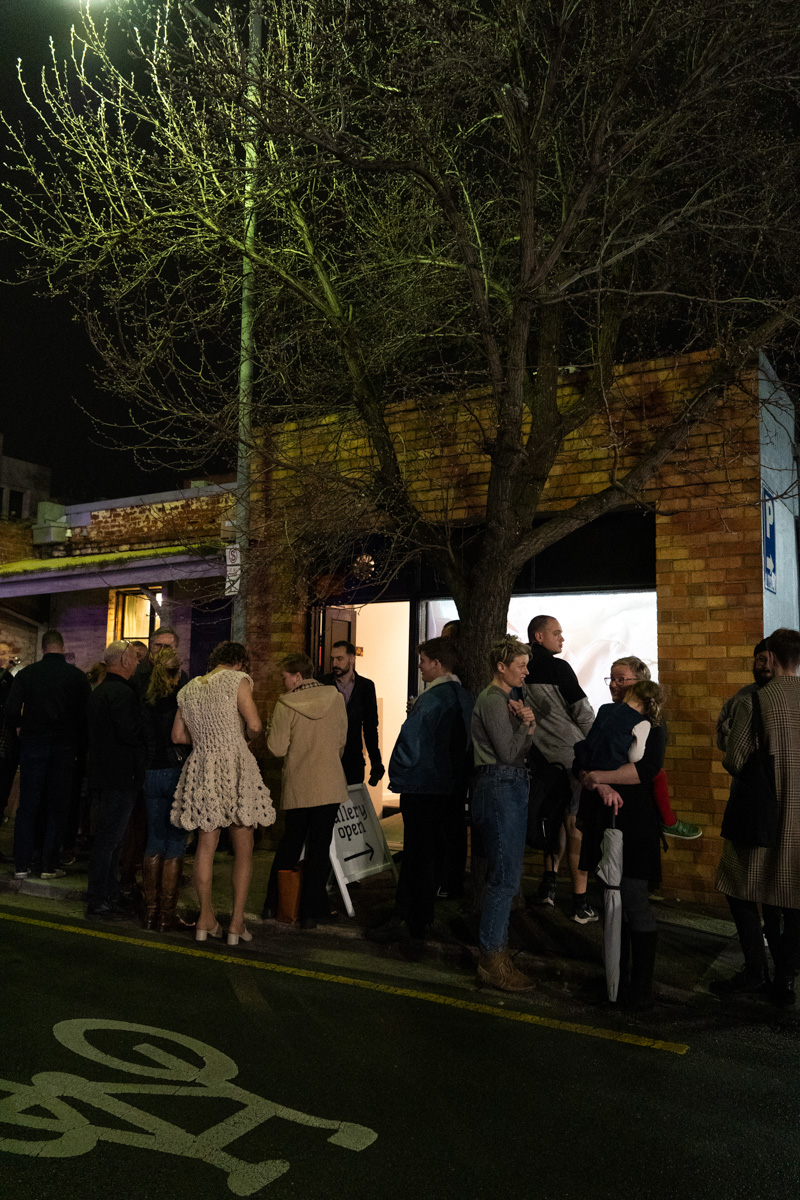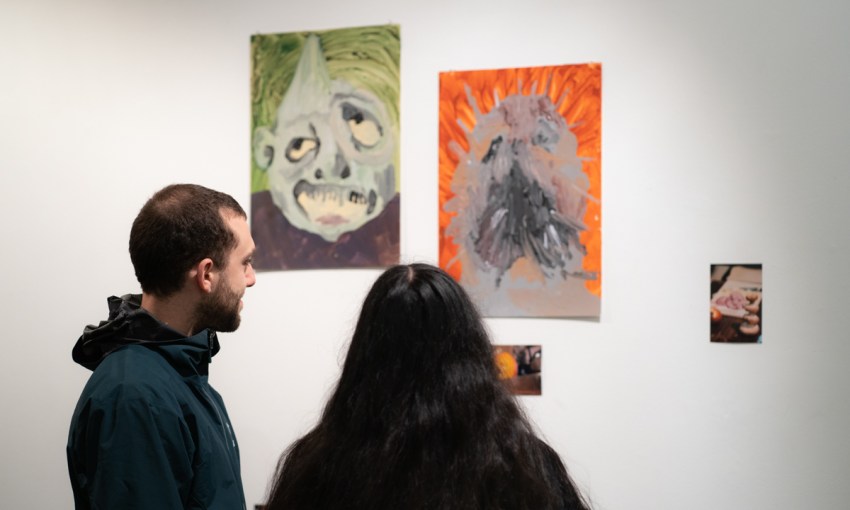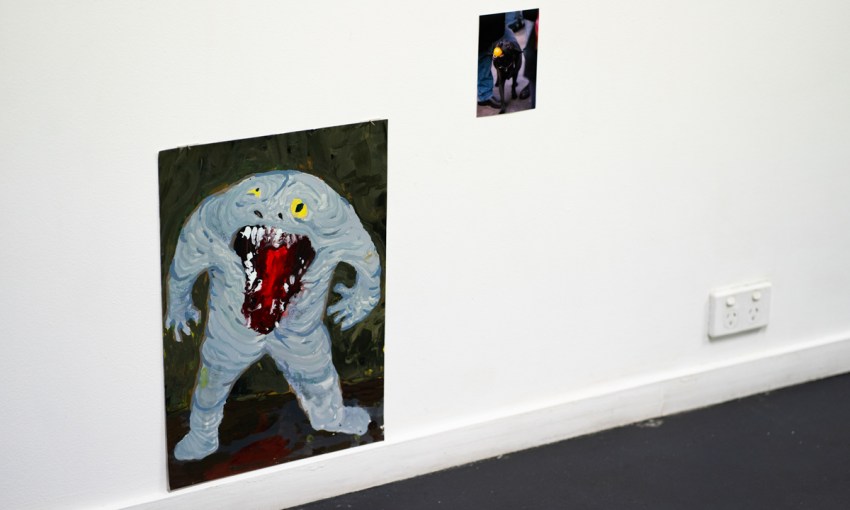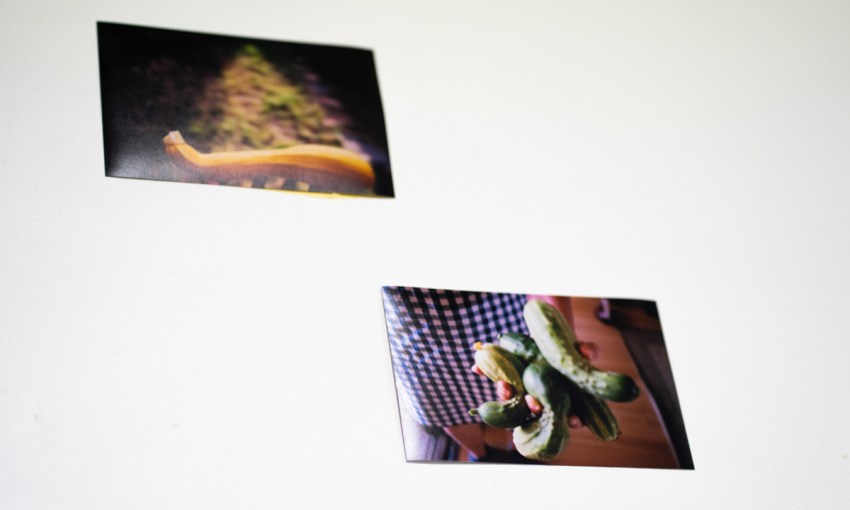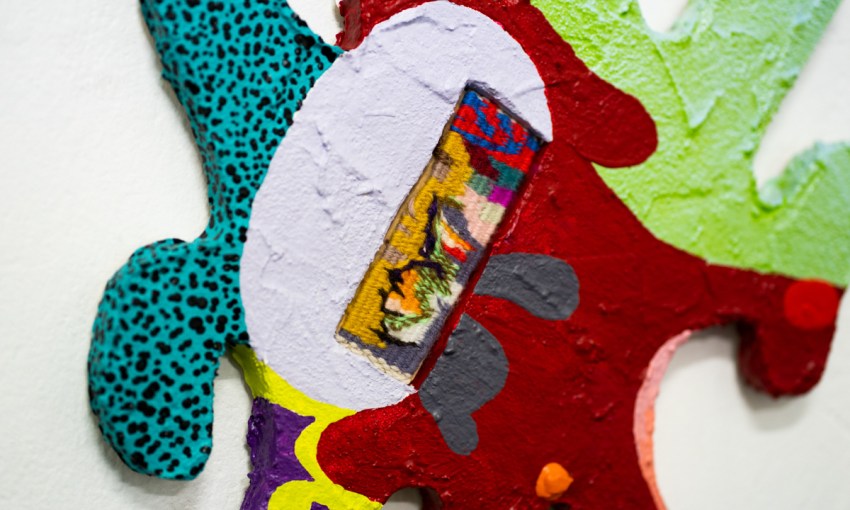In FELTspace’s August–September graduate exhibition, interactions between materials, bodies and processes are brought to light.
Edges of the everyday
I arrive a few minutes early to the pale light of a Windows operating system projected above the muffled edges of the pavement. Inside, someone is stepping off a ladder.
FELTspace’s main room is brightly lit against the ominous grey outside. Once indoors, the insipid drizzle is forgotten. The monster night is settling its claws around the gallery, but a photo of a blurry ear perfectly paired with a drawing of two jostling creatures lures me into the safety of endless segues – like a ‘90s choose-your-own-adventure.
Vivid imagery and abstract forms blossom like goosebumps across Franklin Holfeld’s paintings, photos and drawings. A monster snarls at my feet, a colourful blob-shaped painting drips toward the floorboards, a two-headed dragon near the ceiling seems to be contemplating the reality of also having two tails. The artist offers hand-written notes with pen drawings, meticulously re-mapping the undemanding comfort of domestic spaces. But, like the nails holding up irregular cuts of paper, this comfort is always teetering on the knife-edge between quotidian chaos and the macabre.
Paintings make neat tears – of all shapes and sizes – in the fabric of the everyday.
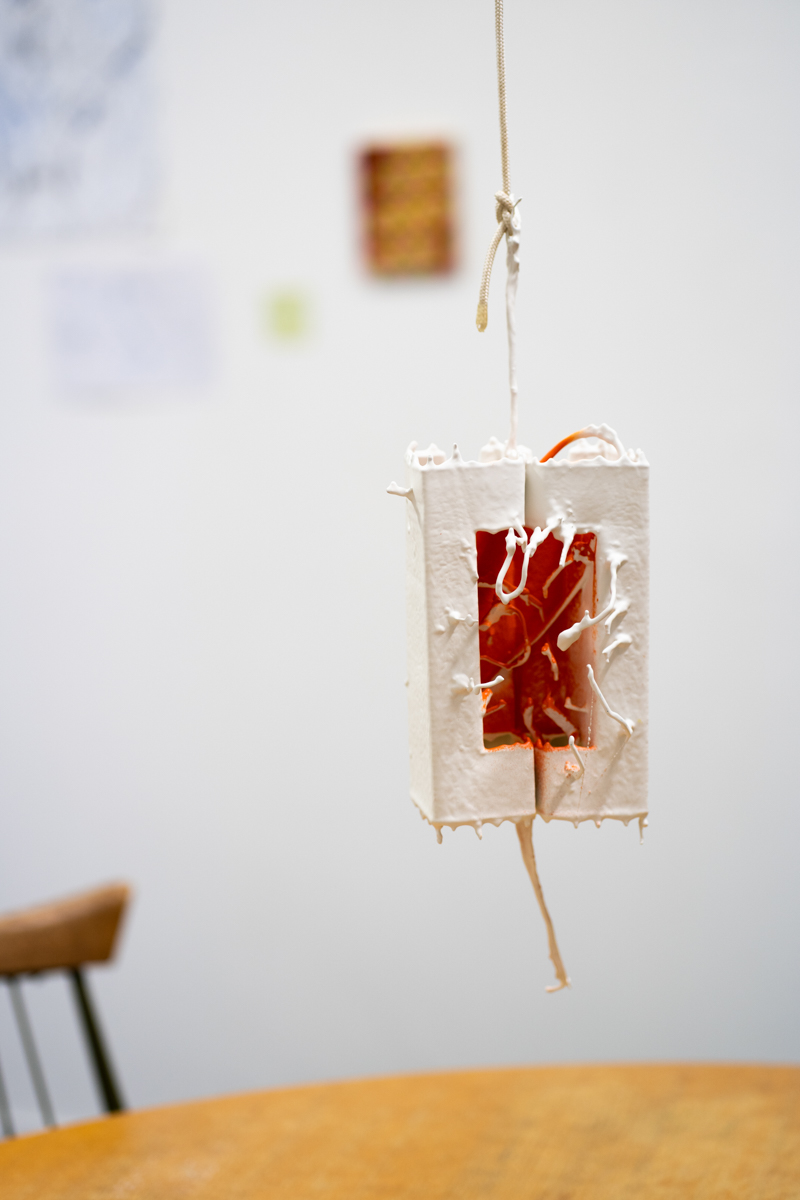
The circular table in the centre of the gallery is suddenly in focus (for dinner with a pea-coloured, venomous deep-sea creature, turn to page 149). Above the table, a low-hanging lantern-like object, reaches a tendril towards a stack of slime-green and brown biscuits on a stand. The bench a few feet away seems to only appear when people use it.
Anisha Pillarisetty is a final-year journalism and creative writing student and community radio producer, living and working on unceded Kaurna Yerta. Her writing has been published across various platforms.
This piece was contributed as part of FELTspace’s FELTwriter program. For more information on the program, see the website.
Franklin’s photos are markers (you are here), using playful composition to turn domestic scenes and objects into apparitions. Slippery tentacles of nostalgia reach through the Kodak blue sky to the wilting sunflower yellow. I never saw real sunflower plants until I was older, so it sounds strange to describe this feeling as nostalgia, but they seem oddly fitting as I stumble upon more childhood paraphernalia. What is it about monsters that I find comforting?
FELTspace chair Madeline Reece tells the people gathered tonight the gallery is the fullest it’s been since the pandemic; despite this, the bustle of the crowd seems to be drowned out by the rush of Cecilia Tizard’s Unclean.
Here, materials are again not quite what they seem, and the ghosts of domestic spaces linger. I expect the heady fumes of house paint as I approach a tray on a shelf, and what looks like a swatch of colours pulling my gaze along the wall. Instead, I’m met with a seemingly delicate vessel on the floor, which, I imagine, is made of some sort of paper. The artist’s process seems like a trick of light, revealing itself in flashes of colour from the corners of my eyes.
Upon looking closer, the line of cameraless photographic prints circling the back room lift off the walls like sheets on a clothesline. The colours – ranging from pastels to industrial waste – alternate between cloud-like texturing to shapes with hard edges, reminding me of the way light slices and stagnates, and speckles and disappears.
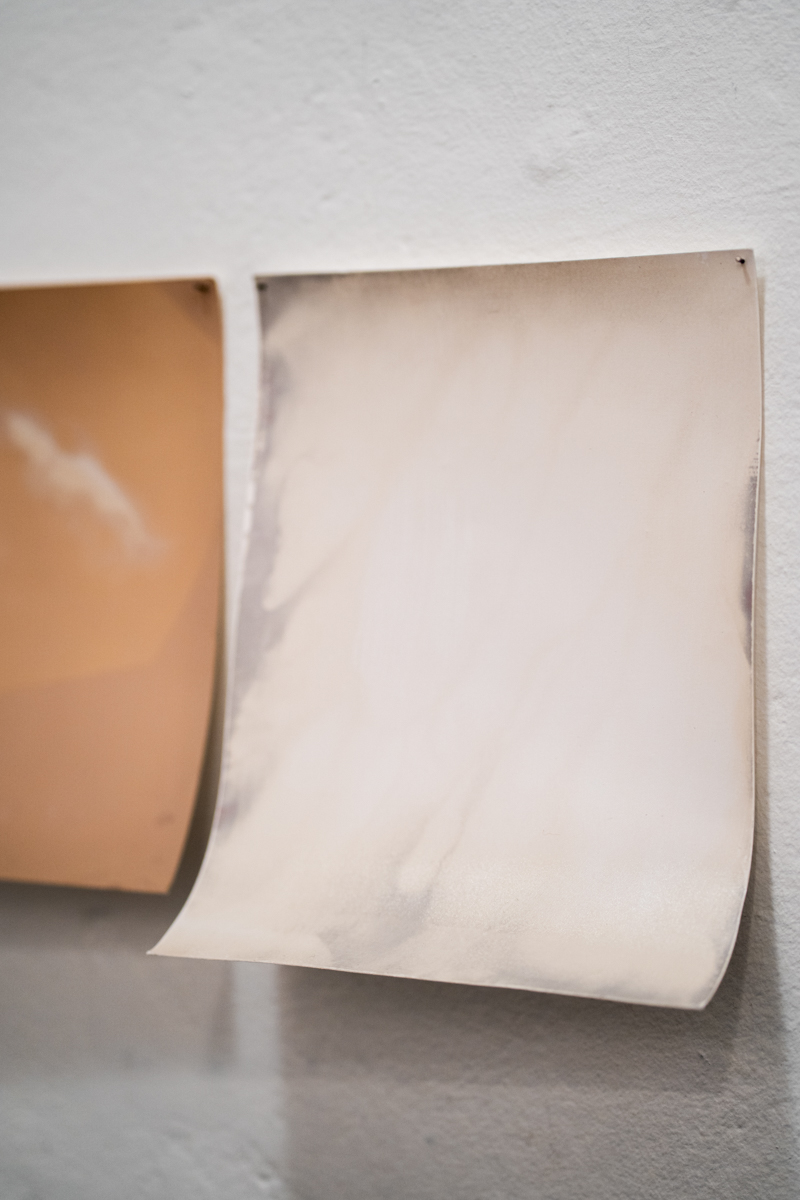
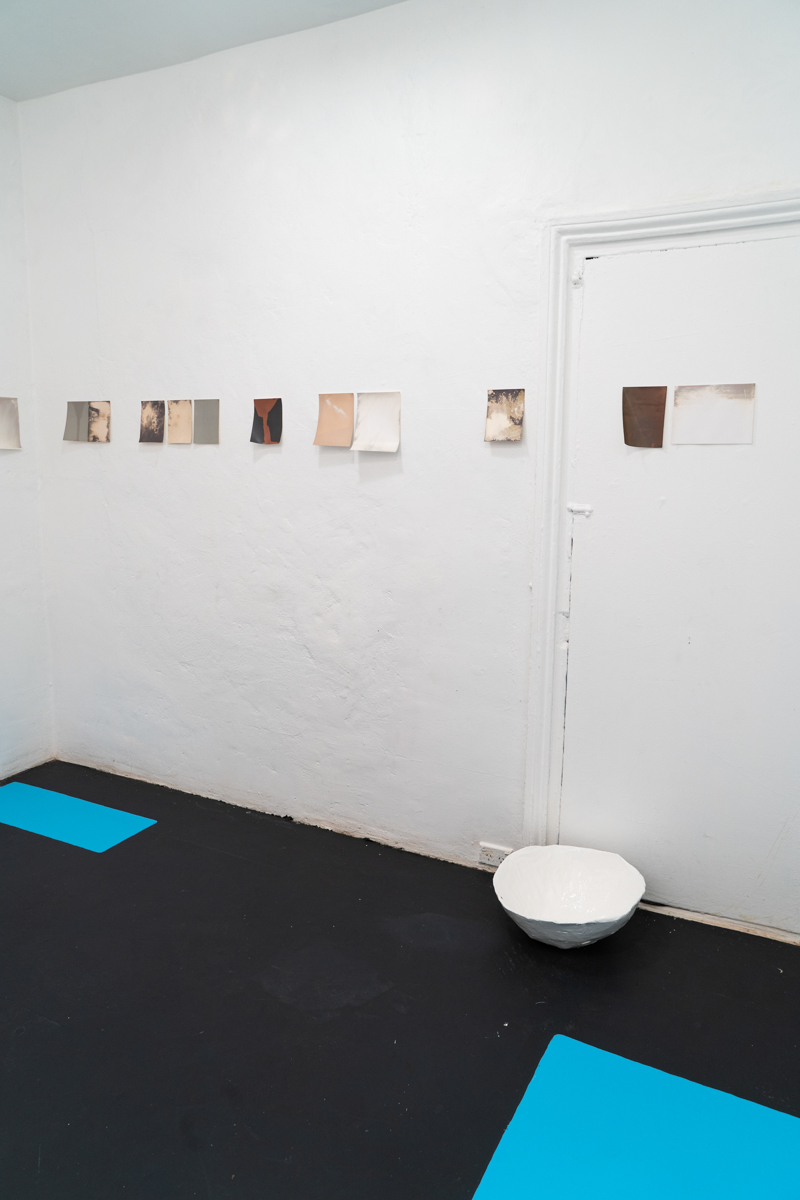
I step over a bright blue painted rectangle on the floor and think of how our bodies move in curated spaces. The careful eking of light across the prints, juxtaposed with papier-mâché vessels sealed in bright enamel paint, makes the room feel vast – as if the painstaking process has stretched the materials, uncurling like spools of film held up by clothes pegs.
The bright of the bowl holds my gaze, offering further respite from the grey outside. Light is fickle, I realise, as it swallows the enamel. Or is it that material is mutable? Either way, Unclean offers solace.
I hear orchestral strings building to a gentle swell before I see Sam Matthewman’s Our Intertwined Tether. Sam is across the room, wearing a crocheted dress – the weight of the stitches accentuated by the tumble and turn of the crowd, their sandals catching the gallery light. On the screen, Sam uses a wooden needle and rope to crochet the dress while wearing it, perched barefoot on a stool draped in white fabric that pools around them. Suddenly, I become acutely aware of how clothing can obscure the perpetual process of ma(r)king and unma(r)king, weighing down certain bodies. A bundle of sticks rests against another structure obscured by folds of cloth. (Earlier, we see Sam tie the sticks together with the same kind of rope – and care – they use to make the dress.)
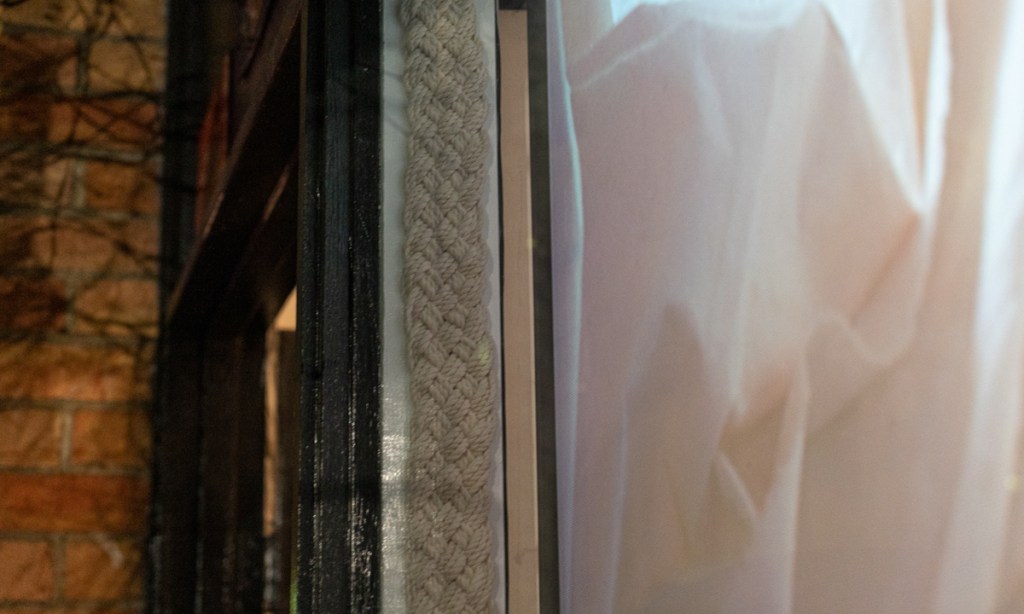
Close-up pans of the workspace – the unspooled thread, measuring tape, a ratchet strap, a length of rope, a safety pin – reminds me of how fabric, even at its material stages, begins to hem in the boundaries in which bodies are allowed to exist. Sam lets the wooden needle drop from their hands, and the fabric swallows it.
Sam brings scissors to the rope and snips, and even though I know how this action will end, watching them tie a knot to stop the dress unravelling seems to flutter on the edge of something. Sam looks into the camera, and I’m reminded that I’m looking, too.
As I leave, I notice the glow of the screen catching in the sill outside lined with braided rope; on one side the braid dangles unfinished, and some of the edges seem to be fraying. The rope’s fibre is suddenly bright against the aching night. How much of altering clothes is about unravelling stitches?
Franklin’s exhibition notes ask, “What is there that simply can’t be seen?” Adding, “There must be something.”
There must be. As I leave, something seems buoyant, brimming around the edges of the night.
